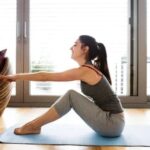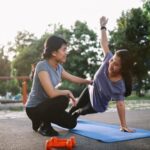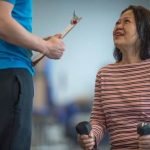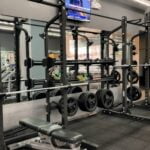Are you looking to improve your horse riding fitness? Whether you’re a beginner or a seasoned rider, incorporating exercises for horse riding fitness into your routine can help enhance your performance in the saddle. From warm-up exercises to core strengthening and cardiovascular workouts, this article will guide you through various fitness routines tailored specifically for horse riders.
Being physically fit is essential for horse riding, as it not only improves your overall strength and balance but also enhances your endurance and flexibility. In this section, we will delve into the importance of fitness for horse riding and how it can benefit riders of all levels. By understanding the significance of being in top physical condition, you’ll be better equipped to navigate the specific exercises and training regimens outlined in the following sections.
To excel in horse riding, having a strong foundation of fitness is key. As you embark on this journey to improve your riding abilities, it’s crucial to recognize the positive impact that targeted exercises can have on your overall performance. So, let’s explore the various ways in which fitness directly contributes to better horsemanship and delve into the specific types of exercises that can help elevate your riding experience.
Benefits of Being Physically Fit for Horse Riding
Being physically fit is crucial for any equestrian, as it directly impacts the rider’s ability to communicate effectively with the horse and maintain proper form while riding. In addition to contributing to a better overall riding experience, staying in shape can also reduce the risk of injury and improve the rider’s confidence and performance. Here are some key benefits of being physically fit for horse riding:
Improved Balance and Coordination
Having good balance and coordination is essential for controlling the horse and maintaining a steady position in the saddle. Engaging in exercises that target these areas can help riders develop a strong core and stable seat, which is vital for effective communication with the horse.
Enhanced Endurance
Horseback riding requires physical stamina, as it engages multiple muscle groups and demands sustained energy. By incorporating cardiovascular exercises into their fitness routine, riders can build endurance and stay focused during longer rides or demanding activities such as jumping or eventing.
Reduced Risk of Injury
A fit body is less prone to injury, especially when faced with the challenges of a sport like horse riding. Strengthening muscles through targeted exercises can help support joints and protect against strains or falls, promoting overall safety in the equestrian arena.
Incorporating regular
Warm-Up Exercises for Horse Riding
When it comes to horseback riding, being physically fit is essential for both the rider’s safety and the well-being of the horse. One of the key components of a proper fitness routine for horseback riding is incorporating warm-up exercises. These exercises help to prepare the body for the physical demands of riding and reduce the risk of injury.
Dynamic Stretching
Dynamic stretching involves performing controlled, fluid movements that mimic the actions you will be doing while riding. This can include leg swings, arm circles, and torso twists. Dynamic stretching helps to improve flexibility and range of motion in your joints, which is crucial for maintaining proper posture and balance while on horseback.
Cardiovascular Warm-Up
Engaging in a brief cardiovascular warm-up such as jogging or brisk walking can help increase blood flow to your muscles, raise your heart rate, and elevate your body temperature. This prepares your body for the physical exertion of riding and helps prevent muscle stiffness or cramping.
Core Activation
Incorporating core activation exercises like planks, pelvic tilts, and bird dogs into your warm-up routine can help engage and strengthen your core muscles. A strong core is essential for maintaining good posture, balance, and stability while riding, as it helps absorb movement from the horse and enhances overall control in the saddle.
By incorporating these warm-up exercises into your pre-riding routine, you can effectively prepare your body for the physical demands of horseback riding. These exercises not only help prevent injuries but also improve your overall performance in the saddle by enhancing flexibility, strength, and balance. Remember to always listen to your body and consult with a fitness professional before starting any new exercise regimen.
Core Strengthening Exercises for Better Riding Control
Core strength is essential for maintaining balance and stability while riding a horse. By strengthening your core muscles, you can improve your riding control and reduce the risk of injury. There are several exercises that specifically target the core and can benefit horse riders.
One effective core strengthening exercise for better riding control is the plank. This exercise engages the abdominal muscles, lower back, and shoulders, all of which are important for maintaining good posture and stability on horseback. Another beneficial exercise is the Russian twist, which targets the obliques and helps improve rotational control in the saddle.
In addition to these exercises, incorporating stability ball exercises into your fitness routine can also help strengthen the core muscles necessary for better riding control. These exercises challenge your balance and stability, mimicking the movements and demands of horseback riding.
| Exercise | Benefits |
|---|---|
| Plank | Engages abdominal muscles, lower back, and shoulders; improves posture and stability |
| Russian Twist | Targets obliques; improves rotational control in the saddle |
| Stability Ball Exercises | Challenges balance and stability; mimics riding movements |
By incorporating these core strengthening exercises into your fitness routine, you can significantly enhance your riding control, balance, and overall performance in the saddle. Remember to consult with a fitness professional before starting any new exercise program to ensure it aligns with your individual needs and goals as a rider.
Leg Strengthening and Flexibility Exercises
When it comes to horse riding, having strong and flexible legs is essential for maintaining balance, stability, and control while in the saddle. Incorporating specific exercises into your fitness routine can help improve your leg strength and flexibility, ultimately enhancing your overall riding experience.
Here are some leg strengthening and flexibility exercises to consider adding to your workout regimen:
- Squats: This classic exercise targets the quadriceps, hamstrings, and glutes, all of which are crucial for maintaining a secure seat while riding.
- Lunges: Walking lunges or stationary lunges help strengthen the muscles in your thighs and hips while also improving hip flexibility.
- Calf Raises: Strong calf muscles are important for maintaining proper lower leg position and stability in the stirrups. Performing calf raises can help achieve this.
In addition to these specific exercises, activities such as yoga or Pilates can also contribute to better leg strength and flexibility, as they focus on body alignment, balance, and muscle engagement.
Remember that consistency is key when it comes to seeing improvement in leg strength and flexibility. Aim to incorporate these exercises into your regular fitness routine at least a few times a week to experience the benefits they can bring to your horse riding abilities. By working on strengthening and stretching your legs through targeted exercises, you’ll be better equipped to handle the physical demands of riding with confidence and ease.
Upper Body Strength Training for Improved Balance
Developing upper body strength is crucial for achieving improved balance and stability while horseback riding. When a rider has a strong upper body, they are better able to maintain proper posture, control the reins effectively, and respond to the horse’s movements with greater ease. In addition, a strong upper body can help prevent fatigue and reduce the risk of injury during long rides or when encountering unexpected challenges on the trail.
There are several exercises that can target the muscles in the arms, shoulders, chest, and back to build upper body strength. Push-ups, tricep dips, planks, and shoulder presses are all effective exercises for horse riding fitness. These exercises not only help strengthen the necessary muscle groups but also improve overall coordination and proprioception – essential components of maintaining balance while riding.
Incorporating these exercises into a regular workout routine can significantly enhance a rider’s ability to maintain stability in the saddle. It is important to remember that building upper body strength takes time and consistency.
By gradually increasing resistance and incorporating a variety of exercises, riders can develop the muscular endurance needed to remain balanced and in control while riding. When combined with core strengthening and leg exercises, upper body strength training completes a well-rounded fitness regimen for horseback riders.
| Exercise | Description |
|---|---|
| Push-ups | A classic exercise that targets the chest, shoulders, and arms. |
| Tricep Dips | An exercise that focuses on strengthening the triceps and shoulders. |
| Planks | An effective core-strengthening exercise that also engages the shoulders and arms. |
| Shoulder Presses | An exercise using weights to strengthen the shoulders and upper back muscles. |
Cardiovascular Exercises for Endurance in the Saddle
Cardiovascular fitness is a crucial component of overall horse riding fitness. Having good endurance will not only allow riders to stay in the saddle for longer periods but also improve their performance and enjoyment. Here are some cardiovascular exercises that can help improve endurance for horse riding:
- Running or Jogging: Running or jogging is an effective way to build cardiovascular endurance, as it increases heart rate and lung capacity. This can directly translate into improved stamina while riding.
- Cycling: Cycling is another fantastic way to improve cardiovascular fitness. It also targets the muscles in the legs, which are essential for maintaining proper posture and stability while riding.
- Swimming: Swimming is a full-body workout that not only strengthens the cardiovascular system but also enhances overall muscle tone and flexibility. It’s a low-impact exercise that can be beneficial for riders who may have joint issues.
Incorporating these exercises into a regular routine can significantly increase a rider’s endurance, allowing them to handle longer rides with greater ease. Additionally, high-intensity interval training (HIIT) can be beneficial for improving cardiovascular fitness and mimicking the bursts of energy required during intense riding activities such as jumping or galloping.
Remember, it’s essential to consult with a healthcare professional before starting any new exercise regimen, especially if you have any underlying health conditions or injuries. By including these cardiovascular exercises in your horse riding fitness program, you’ll be better equipped to handle the physical demands of equestrian activities and enjoy your time in the saddle even more.
Cross-Training Activities to Enhance Riding Fitness
In addition to specific exercises designed for horse riding fitness, it is also beneficial to incorporate cross-training activities into your workout routine. Cross-training involves participating in a variety of different exercises and activities to improve overall strength, endurance, flexibility, and balance. When it comes to horse riding, cross-training can help enhance your physical fitness in ways that directly translate to improved performance in the saddle.
One effective cross-training activity for enhancing riding fitness is yoga. Yoga focuses on building core strength, flexibility, and balance, which are all essential components of being a successful rider. The various poses and movements in yoga can help increase body awareness and improve posture while riding. Additionally, yoga can help reduce muscle tension and promote relaxation, making it an excellent complement to the physical demands of horse riding.
Another beneficial cross-training activity for riders is Pilates. Similar to yoga, Pilates focuses on strengthening the core muscles, improving flexibility, and enhancing overall body alignment. By incorporating Pilates into your fitness routine, you can develop better control over your body movements while in the saddle. The emphasis on proper breathing techniques in Pilates can also aid in maintaining focus and composure during intense riding situations.
Incorporating activities such as swimming or cycling can also provide excellent cross-training benefits for horse riders. These cardiovascular exercises help improve overall endurance and stamina, which are crucial for long rides or competitive events.
Additionally, these activities engage different muscle groups than those used primarily in horse riding, leading to a more well-rounded level of physical fitness that directly benefits equestrians. By diversifying your workouts with various cross-training activities, you can achieve a higher level of riding fitness that will ultimately enhance your performance as a rider.
Cool Down and Stretching Routine for Post-Ride Recovery
After a rigorous horse riding session, it is essential to incorporate a cool down and stretching routine into your post-ride recovery. This helps prevent muscle soreness and stiffness, reduces the risk of injury, promotes relaxation, and aids in the overall recovery process. The following section will highlight some effective cool down and stretching exercises that are specifically beneficial for riders to include in their post-ride routine.
To start your post-ride cool down, begin with some gentle walking or slow and steady trotting on a loose rein for about 10-15 minutes. This allows your horse’s muscles to gradually transition from the intensity of the ride to a state of relaxation. It also helps regulate your breathing and heart rate before dismounting.
Once you have completed the initial walk or trot, dismount and proceed with some static stretches to release tension in your muscles. Focus on stretching your calf muscles, quadriceps, hamstrings, hip flexors, lower back, and shoulders. Hold each stretch for at least 30 seconds and remember to breathe deeply as you do so.
This will help improve flexibility, reduce muscle tightness, and promote blood circulation throughout your body. Additionally, consider incorporating yoga poses such as downward dog or child’s pose to further enhance the stretching routine for overall body relaxation.
Incorporating these cool down and stretching exercises into your post-ride recovery routine can significantly contribute to maintaining flexibility, preventing muscle soreness, improving recovery time, and enhancing overall well-being. Make it a habit to prioritize this important part of your riding fitness regimen after every session in the saddle.
Conclusion
In conclusion, incorporating fitness into your horse riding routine is essential for improving your overall riding performance and maintaining a healthy mind and body. The benefits of being physically fit for horse riding are numerous, including better riding control, improved balance, endurance in the saddle, and faster post-ride recovery.
By regularly engaging in warm-up exercises, core strengthening routines, leg strengthening and flexibility exercises, upper body strength training, cardiovascular workouts, cross-training activities, and cool down and stretching routines, you can enhance your riding fitness and become a better rider overall.
By prioritizing fitness as an integral part of your horse riding routine, you are not only investing in your own well-being but also in the well-being of your equine partner. A strong and flexible body allows for better communication with the horse through subtle cues and aids.
Additionally, increased cardiovascular endurance enables you to keep up with the demands of various equestrian disciplines. Adding cross-training activities such as yoga or Pilates can further improve your body awareness and stability in the saddle.
Incorporating regular exercises for horse riding fitness into your routine may take time and effort but will ultimately pay off in improved performance, enjoyment of the sport, and prevention of injuries. So whether you are a competitive rider or simply enjoy leisurely trail rides, make sure to prioritize fitness to become the best rider you can be.
Frequently Asked Questions
What Exercises Strengthen the Body for Horse Riding?
Exercises that strengthen the body for horse riding include core-strengthening exercises like planks and Russian twists, as well as leg exercises like squats and lunges. Cardio exercises to improve endurance are also important.
What Fitness Do You Need for Horse Riding?
The fitness needed for horse riding includes core strength, balance, flexibility, and endurance. A strong core helps with stability in the saddle, while good balance and flexibility help with overall coordination and movement.
How Do You Get in Shape to Ride a Horse?
Getting in shape to ride a horse involves a combination of strength training, cardio exercises, and flexibility work. It’s important to focus on building core strength, improving balance, and working on endurance to prepare the body for riding.

Passionate about providing useful information to anyone with an interest in the field of Personal Training, I strive to pass on to our readers quality information and to answer any questions about Personal Trainers, the work they do and how to become one.





